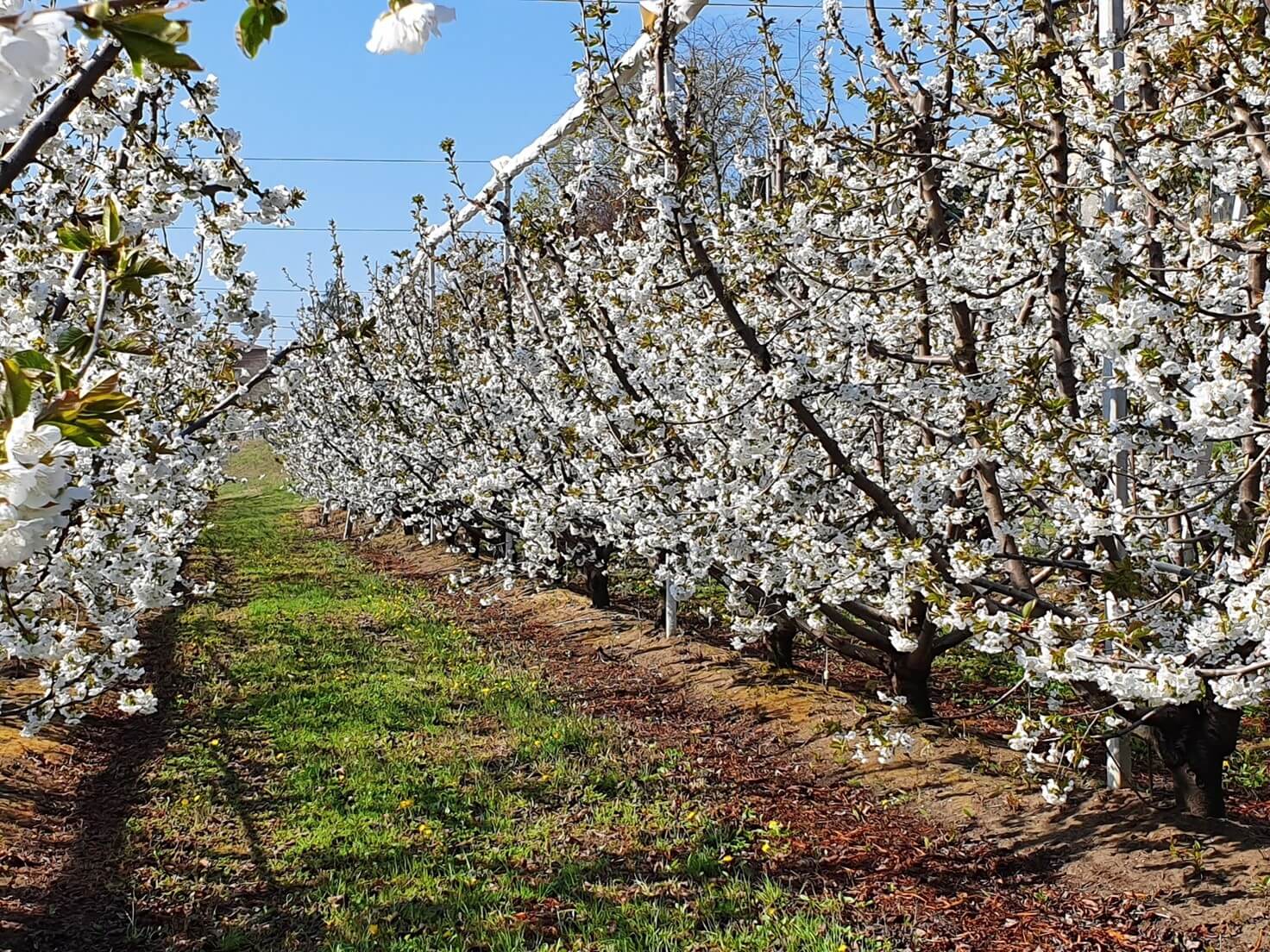
Although this season we have fertility tests with higher results than in previous seasons, which can generate abundant flowering if conditions are favourable in the spring, and, in addition to this, there is a good accumulation of cold winter hours, we must ensure good conditions at the time of flowering, which will undoubtedly guarantee fruit set and the expected yields. Given the conditions this season, I suggest the following management during the flowering period:
1. Auxin application (fertilisation and fruit set)
I suggest an application of Stone Gross (Dichlorprop-P) to encourage fruit set, fruit size and preservation, thanks to the effect the product has on strengthening the abscission zone of the flower and promoting the synthesis of endogenous auxin, which encourages fruit set, thus allowing more fruit to be ‘bound’ once it has formed. Regarding the optimal stage for applying Stone Gross, remember that it is very important to apply only up to the exposed cluster stage to avoid residues of the molecule. Do not apply in weak orchards or those with high disease pressure.
 Table 1: Application methods and doses of Stone Gross.
Table 1: Application methods and doses of Stone Gross.
2. Ethylene inhibitors (fertilisation and fruit set)
I suggest the application of ethylene concentration regulators, especially in self-incompatible or cross-pollinated varieties such as Royal Dawn, Rainier, Bing, Regina, Kordia. In this way, the flowers can remain with a viable pollen tube and a pollen receptive ovary for a longer period of time, delaying their senescence and prolonging their fertilisation possibility, thus improving fruit set. It should be remembered that during flowering the plant releases one of its peaks of ethylene synthesis, so it is important to counteract the effect of this hormone, which causes tissue senescence.
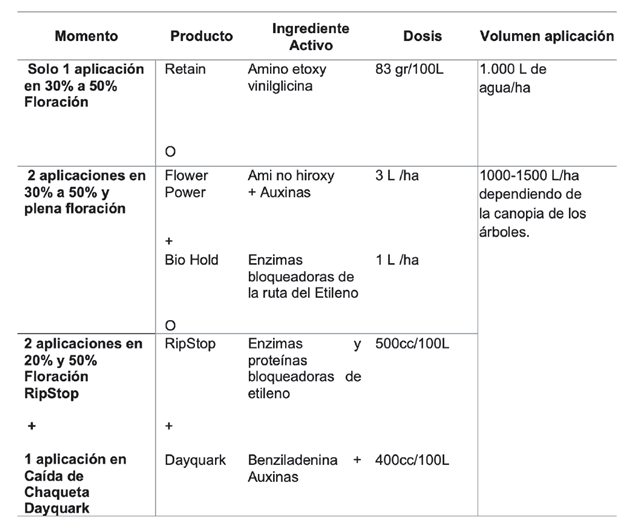 Table 2: Application methods and doses of ethylene inhibitors.
Table 2: Application methods and doses of ethylene inhibitors.
3. Pollinating insects
For self-fertile varieties such as Bing, Royal Dawn, Rainier, Regina, Kordia I recommend 15 hives/ha and 1 pollen bag of 144 g pollen for pollinators from the beginning of flowering until full bloom. For self-fertile varieties such as Lapins and Santina 10 hives/ha are considered.
Bees and bumblebees should be positioned at 10% of flowering. The hives should be placed outside the roadside shacks in order to accumulate more temperature in advance, resulting in more bee activity. In addition, I suggest 2 or 3 hives/ha of Koppert's Bumblebees.
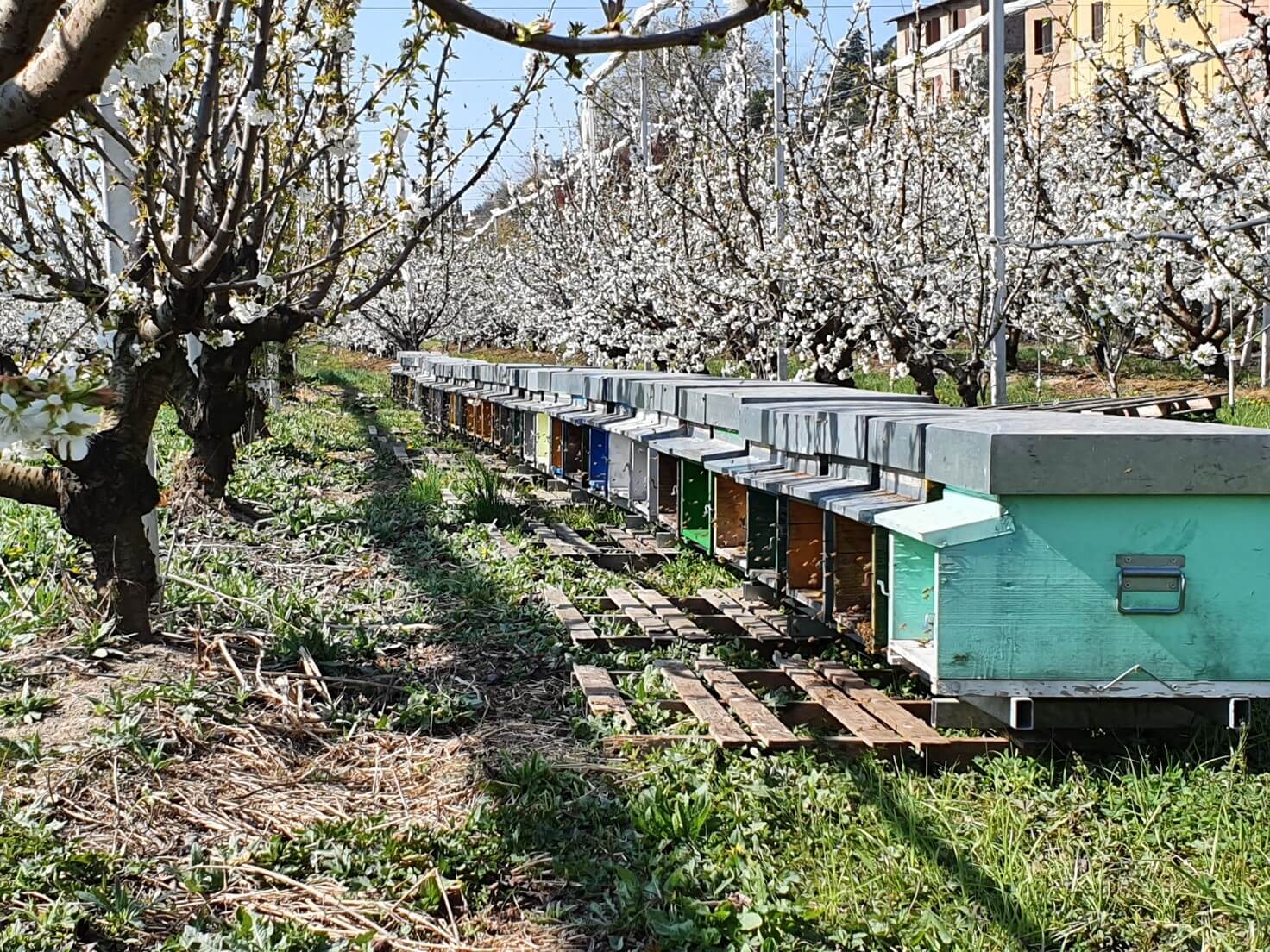
4. Assisted pollination
In orchards with pollinator shortages that require a compensatory pollen supply, it is advisable to apply pollen in the orchard using mechanisms such as electrostatics or drones.
 Table 3: Modes of assisted pollination.
Table 3: Modes of assisted pollination.
5. Application of cytokinins (fruit size)
Phase I of cell division starts at the beginning of flowering and ends 25 days after full flowering. The hormone in charge of generating cell division is cytokinin, which is why it is essential to apply it exogenously to promote more cells, thus building a fruit with a greater cell capacity, which increases fruit size and contributes to firmness and quality.
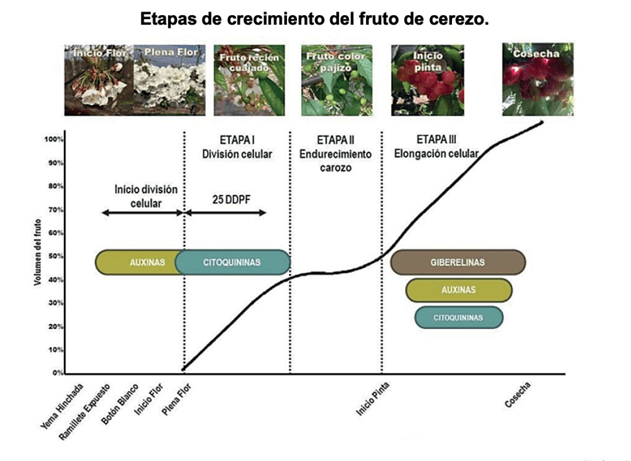 Development and ripening stages in cherry fruits and the role of plant growth regulators.
Development and ripening stages in cherry fruits and the role of plant growth regulators.
Mix all applications of cytokinin with calcium, boron and zinc by foliar application. Zinc improves pollen quality and participates in important enzymatic processes; boron improves pollen quality and participates in pollen tube elongation, as well as being a cofactor in the transport of sugars from the leaf to the fruit; calcium forms calcium pectates that give fruit firmness; it is important to apply it in the early stages of development.
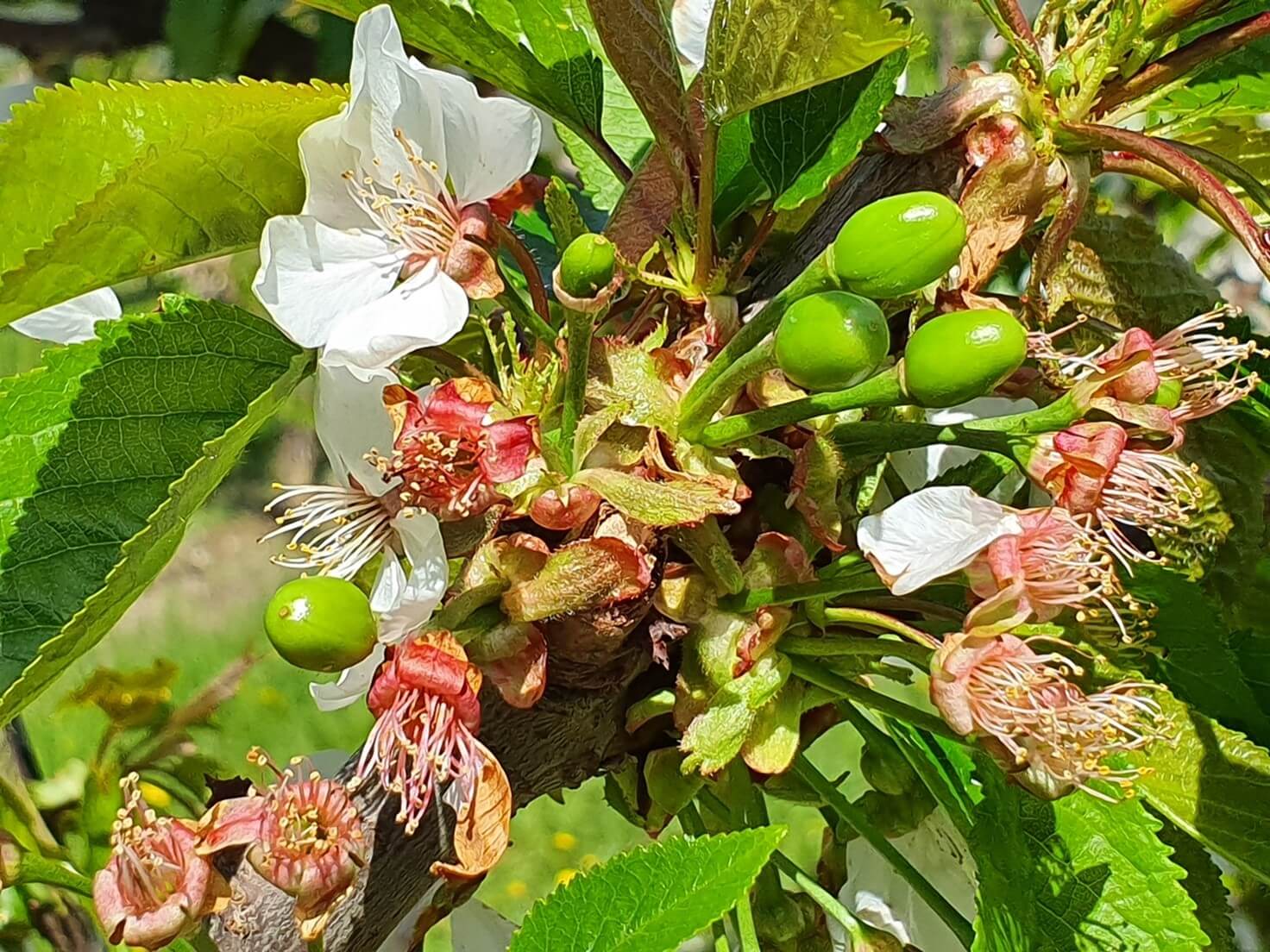
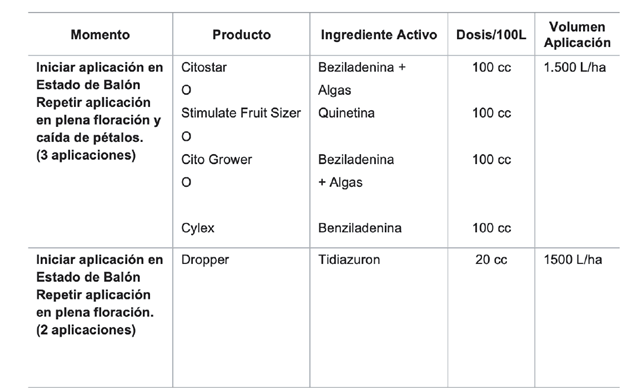 Table 4: Application methods and doses of cytokinin products and supplements.
Table 4: Application methods and doses of cytokinin products and supplements.
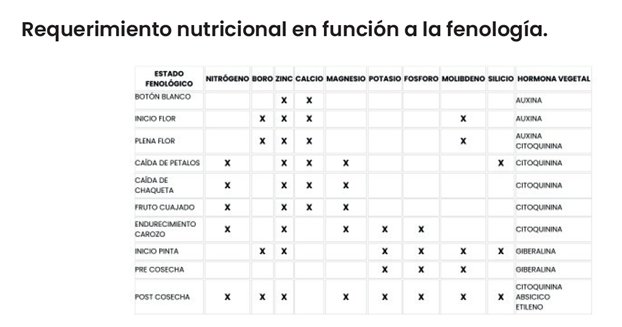 Table 5: Nutritional needs of the cherry tree and growth regulators involved in the different phenological stages of the cherry tree.
Table 5: Nutritional needs of the cherry tree and growth regulators involved in the different phenological stages of the cherry tree.
6. Gibberellin inhibitors (vigour control)
For orchards that start sprouting with excessive vigour and show particularly poor flowering, or are on high vigour rootstocks such as Colt, Mazzard or MaxMa60, I suggest controlling their vigour with the following:
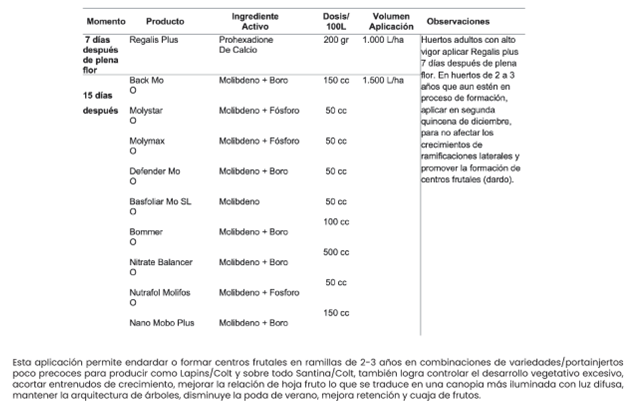 This application makes it possible to endardise or form fruit centres on 2-3 year old twigs in combinations of less precocious varieties/ rootstocks such as Lapins/Colt and especially Santina/Colt. It also helps to control excessive vegetative growth, shorten growth internodes, improve the fruit-to-leaf ratio which results in a more illuminated canopy with diffuse light, maintain tree architecture, reduce summer pruning, improve fruit retention and fruit set.
This application makes it possible to endardise or form fruit centres on 2-3 year old twigs in combinations of less precocious varieties/ rootstocks such as Lapins/Colt and especially Santina/Colt. It also helps to control excessive vegetative growth, shorten growth internodes, improve the fruit-to-leaf ratio which results in a more illuminated canopy with diffuse light, maintain tree architecture, reduce summer pruning, improve fruit retention and fruit set.
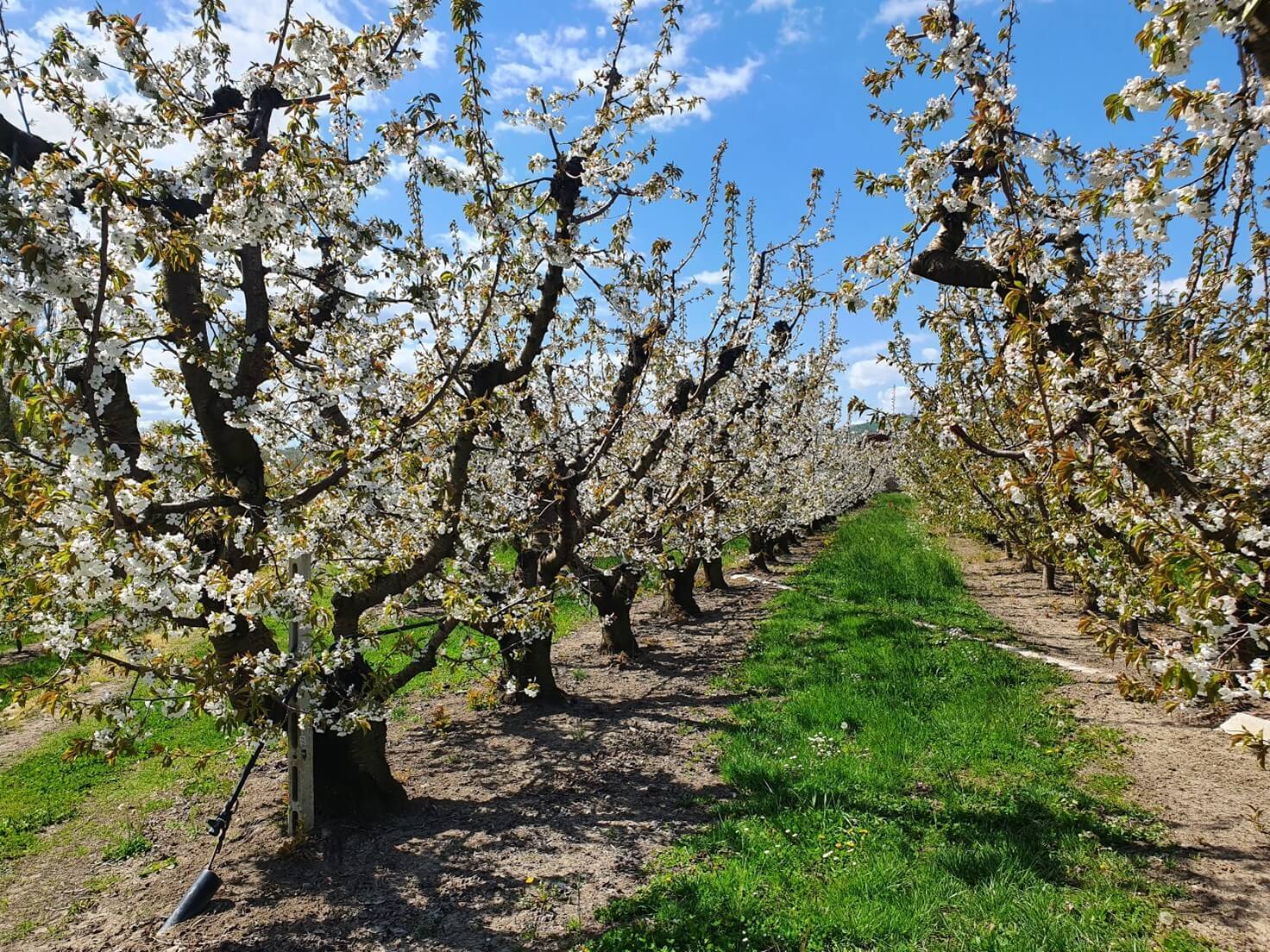
Images: SL Fruit Service